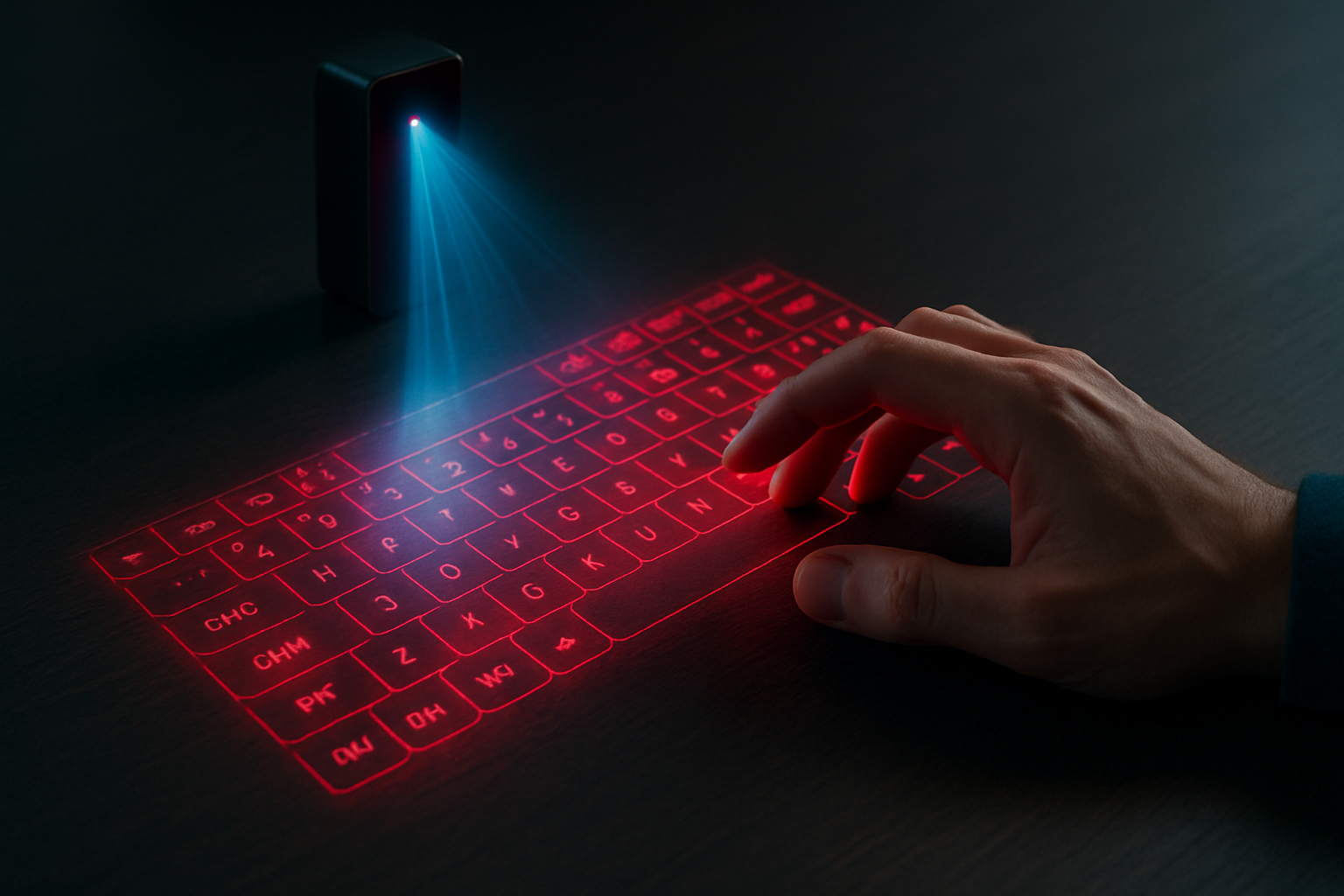Holographic Keyboards: Typing in Thin Air
In a world where technology continues to blur the lines between science fiction and reality, holographic keyboards are emerging as a fascinating evolution in human-computer interaction. These futuristic input devices project a virtual keyboard onto any flat surface, allowing users to type without physical keys. As we delve into this cutting-edge technology, we'll explore its potential to revolutionize how we interact with our devices and the challenges it faces in becoming a mainstream input method.

How Holographic Keyboards Work
At the heart of holographic keyboard technology lies a clever combination of optics and sensors. A small projector casts the image of a keyboard onto a flat surface, while infrared sensors create an invisible plane just above this projection. When a user’s fingers break this plane, the sensors interpret the movement as keystrokes. Advanced algorithms then translate these movements into text input, much like a standard keyboard would.
The Promise of Portability
One of the most significant advantages of holographic keyboards is their unparalleled portability. Traditional keyboards, even foldable ones, take up considerable space in a bag or pocket. Holographic keyboards, on the other hand, can be integrated into smartphones or small standalone devices no larger than a deck of cards. This ultra-portable form factor makes them ideal for travelers, students, or anyone who needs to type on the go without carrying bulky peripherals.
Adaptability and Customization
Unlike their physical counterparts, holographic keyboards offer unprecedented levels of customization. Users can easily switch between different keyboard layouts, languages, or even create custom layouts tailored to specific applications. This flexibility extends to the size of the projected keyboard, allowing users to adjust it based on available space or personal preference. The potential for application-specific interfaces is vast, from specialized layouts for video editing to adaptive designs for users with physical disabilities.
Challenges and Limitations
Despite their futuristic appeal, holographic keyboards face several hurdles in achieving widespread adoption. The lack of tactile feedback is perhaps the most significant obstacle. Traditional typists rely heavily on the physical sensation of keys to maintain speed and accuracy. Holographic keyboards attempt to compensate with visual or auditory cues, but these solutions are not yet perfect substitutes for physical feedback.
The Haptic Feedback Conundrum
To address the tactile feedback issue, some manufacturers are exploring ways to incorporate haptic technology into holographic keyboards. These systems use vibrations or air pulses to simulate the sensation of pressing a key. While promising, current implementations are still in their infancy and struggle to replicate the precise feel of a physical keyboard accurately.
Accuracy and Learning Curve
Another challenge for holographic keyboards is maintaining accuracy in various lighting conditions and on different surfaces. Bright sunlight can interfere with the projection, while textured or uneven surfaces can disrupt the sensing mechanism. Additionally, users often face a steep learning curve when transitioning from physical to holographic keyboards, as the technique for “typing” in air differs significantly from traditional typing methods.
The Future of Holographic Input
As technology advances, we can expect to see significant improvements in holographic keyboard design and functionality. Future iterations may incorporate advanced AI to predict and correct typing errors, further narrowing the gap with physical keyboards. Integration with augmented reality systems could also open up new possibilities, such as projecting keyboards onto any surface within a user’s field of view.
Market Impact and Pricing
Currently, holographic keyboards remain a niche product, with prices ranging from $100 to $300 for standalone devices. As the technology matures and production scales up, we can expect these prices to decrease, potentially making holographic keyboards more accessible to the average consumer. The market impact could be substantial, potentially disrupting the traditional keyboard industry and opening up new design possibilities for mobile devices and wearables.
In conclusion, holographic keyboards represent an exciting frontier in input technology. While they face significant challenges in replicating the tactile experience of physical keys, their potential for portability, customization, and integration with future technologies makes them a compelling area of development. As we continue to push the boundaries of human-computer interaction, holographic keyboards may well play a crucial role in shaping how we communicate with our devices in the years to come.




